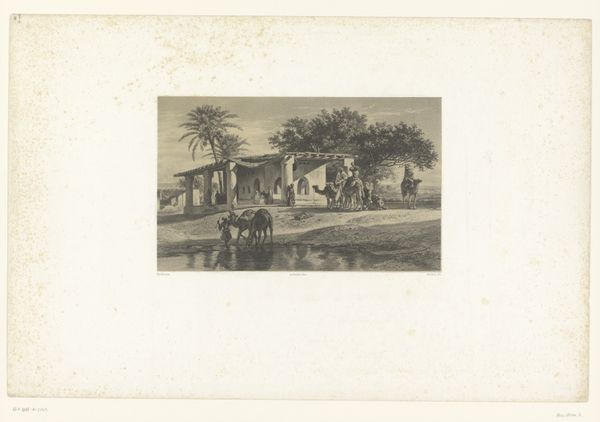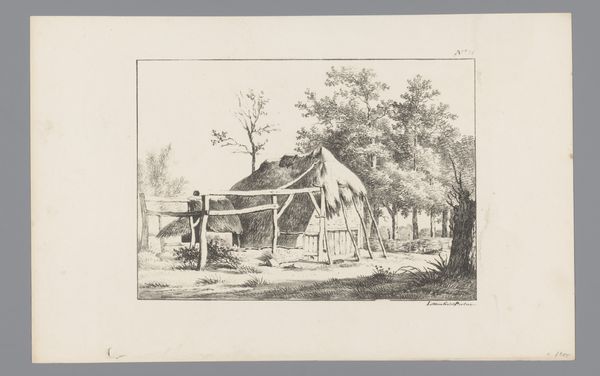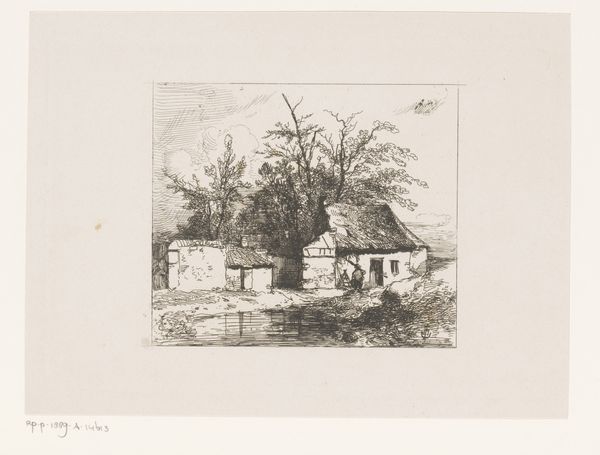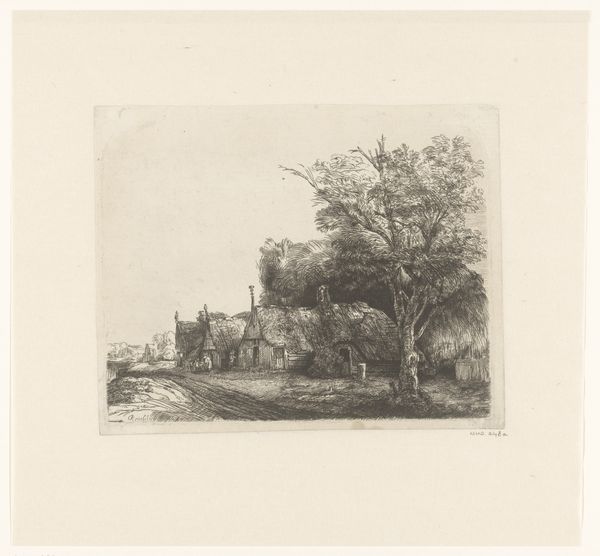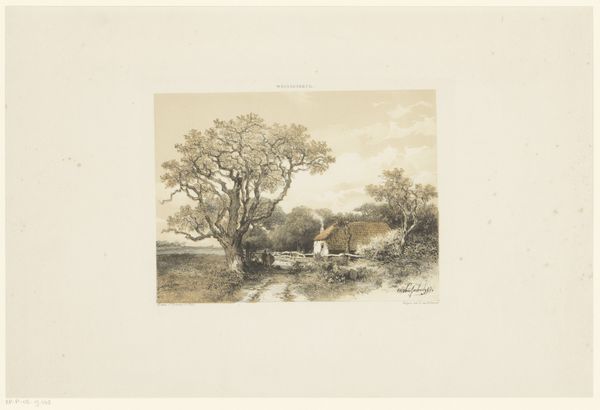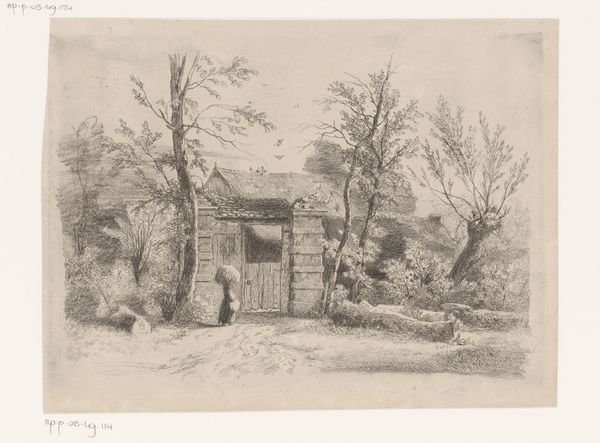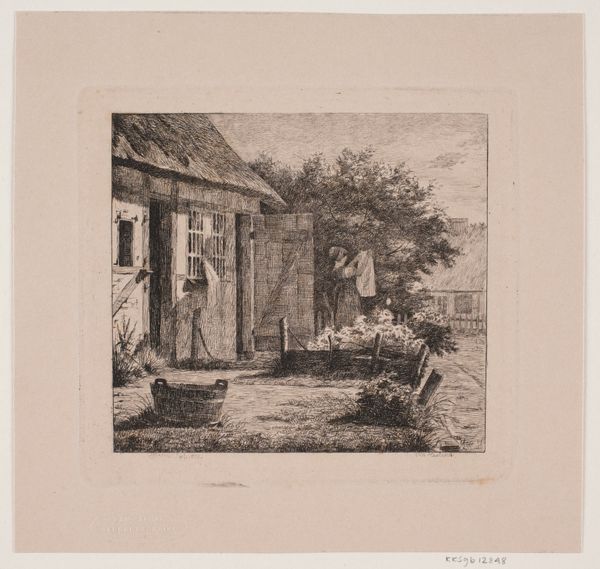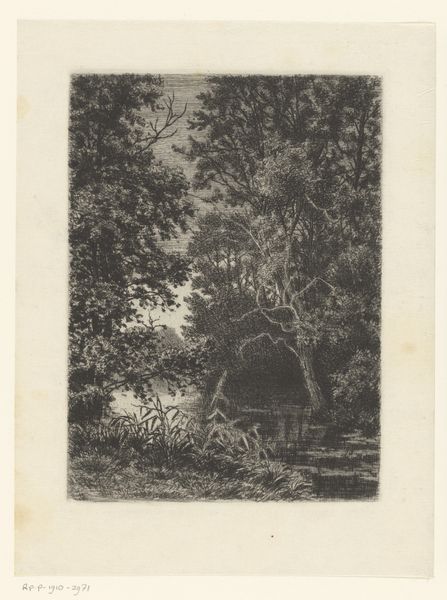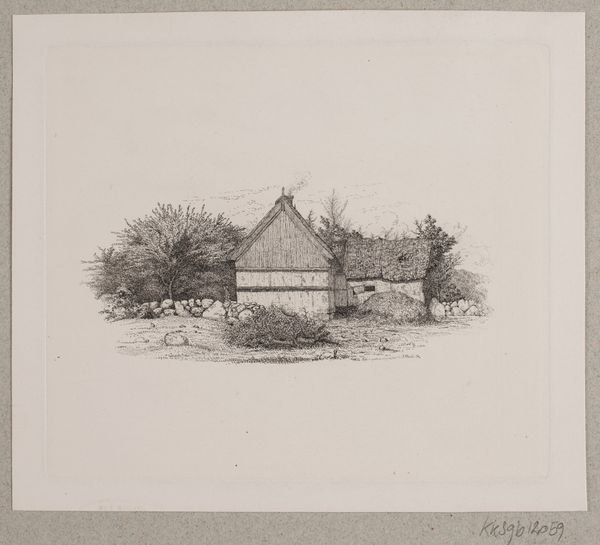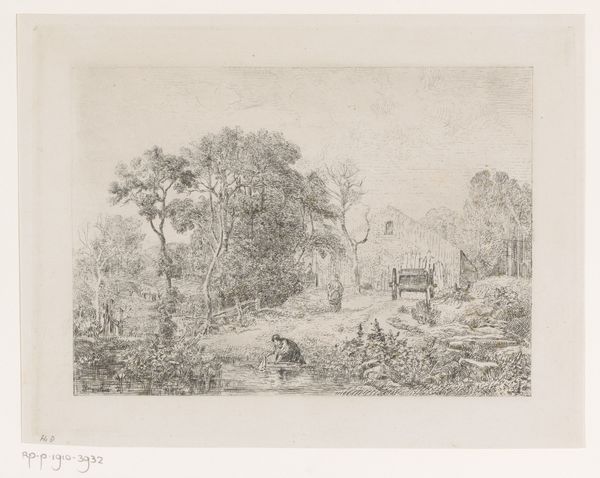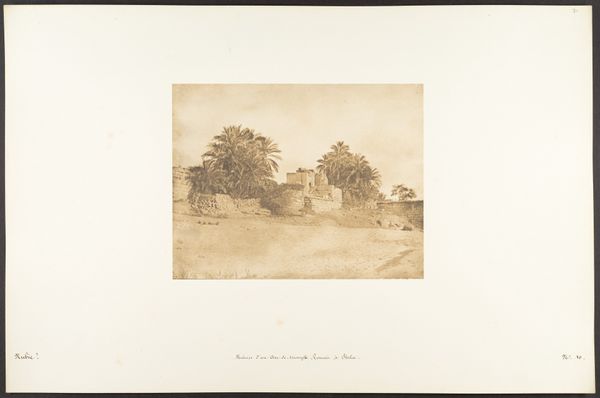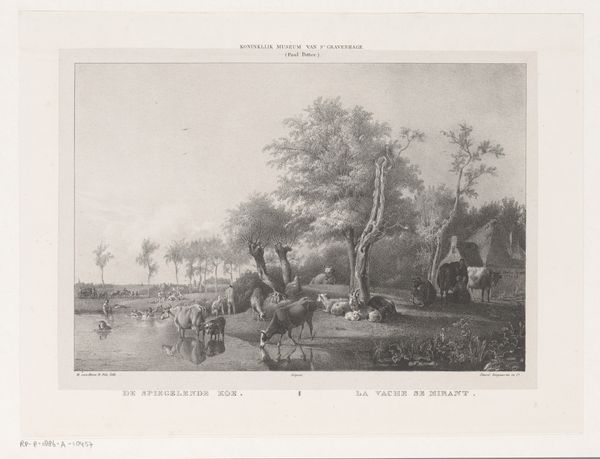
print, etching
# print
#
etching
#
landscape
#
romanticism
#
genre-painting
Dimensions: height 181 mm, width 251 mm
Copyright: Rijks Museum: Open Domain
Curator: We’re looking at "Toegang van een boerderij in de omgeving van Brussel" ("Entrance to a Farm near Brussels"), an etching created around 1850 by Paulus Lauters, currently housed in the Rijksmuseum. Editor: There's an undeniable charm here. The softness of the etching technique gives the whole scene a very muted, almost dreamlike quality. I'm immediately drawn to the textural details of the wooden gate, its worn materiality and suggesting years of exposure to the elements. Curator: That aligns perfectly with the broader social context of the era. The mid-19th century witnessed significant industrialization across Europe, and Lauters, through Romanticism, subtly hints at the tensions of industrialization with nature through a somewhat idealized lens. His compositions are about rural escape, portraying it as a form of cultural protest. Editor: You can really see how the focus on process and materials challenges those sharp distinctions between high art and the kind of utilitarian architecture you might find in the countryside. Look closely—each mark tells the story of its making. It’s about celebrating humble, everyday construction and that speaks to a deeper kind of material honesty. Curator: Absolutely. The solitary figure near the entrance adds a critical human dimension, subtly speaking to themes of labor, belonging, and perhaps even the changing roles within agrarian societies during the industrial revolution. Her position is suggestive and opens up multiple lines of inquiry to feminist critiques about representation and rural labor, even gender. Editor: Do you see those tree trunks? Notice the contrast between their rough surfaces and that figure’s smoother lines. The entire image seems to ask questions about humanity’s place within a crafted and naturally aging landscape. The composition celebrates those interactions rather than making stark oppositions. Curator: These interactions, mediated through the materiality of the work and its thematic exploration of landscape and genre-painting, give us powerful insights into a culture grappling with unprecedented change. The romantic depiction serves as a reminder of our shared humanity and the need to foster a connection between nature and self. Editor: Right. Focusing on its raw materials and construction is more than just studying a historical artwork; it’s like engaging with a set of persistent values tied up with what we choose to value as makers, consumers, and humans.
Comments
No comments
Be the first to comment and join the conversation on the ultimate creative platform.
